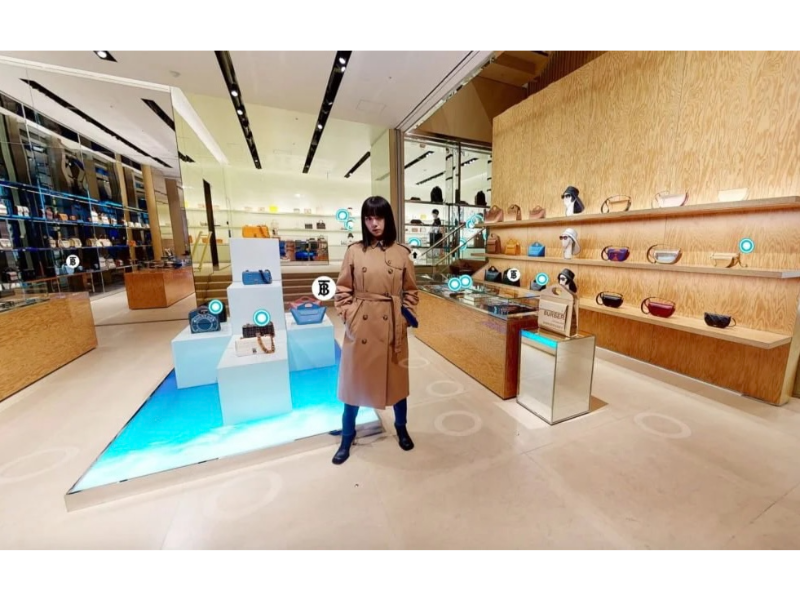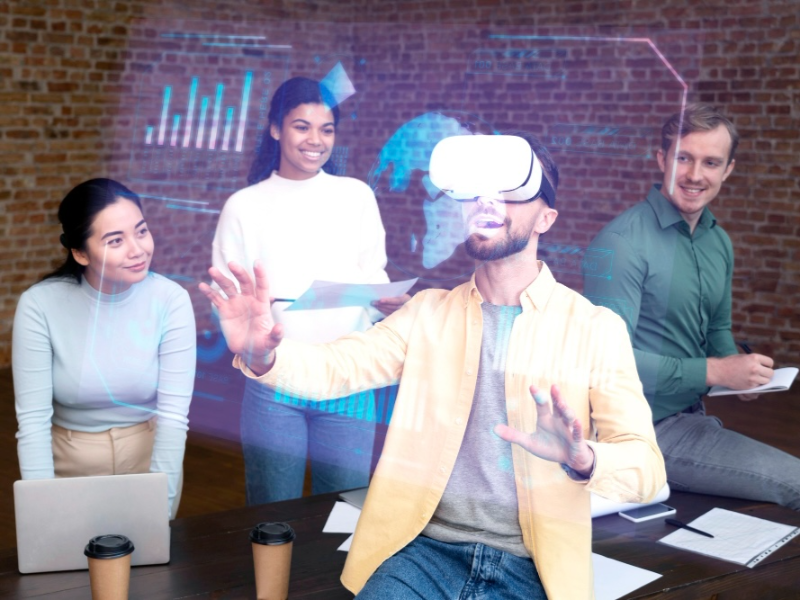- The 3D internet transforms digital interaction by allowing users to navigate and interact within virtual environments using VR and AR technologies, creating a sense of presence and engagement beyond the traditional 2D web.
- The 3D internet relies on advanced 3D modeling and animation tools, spatial computing, blockchain for secure transactions and NFTs, and robust networking and cloud computing infrastructure to support real-time data processing and interactions.
- The 3D internet has vast potential applications in entertainment (virtual concerts, immersive gaming), education (virtual classrooms), commerce (virtual shopping malls), healthcare (virtual consultations), and real estate (virtual property tours), with continuous technological advancements promising to overcome current challenges and expand its reach.
The concept of the 3D internet, often referred to as the Metaverse or Web 3.0, is transforming the digital landscape. Unlike traditional web browsing, which presents information on flat, static pages, the 3D internet offers an immersive and interactive experience where users can navigate virtual environments. This blog explores the mechanics behind this technology, its key components, and its potential applications and challenges.
Key components of 3D internet
Virtual reality (VR) and augmented reality (AR)
VR and AR are the cornerstones of the 3D internet. VR creates fully immersive environments that users can explore using VR headsets, such as the Oculus Rift or HTC Vive. These headsets track the user’s head movements and render the virtual world accordingly, providing a sense of being physically present in a digital space. AR, on the other hand, overlays digital information onto the real world using devices like smartphones or AR glasses. This technology enhances the real world with digital elements, allowing for a seamless integration of virtual and physical spaces.
3D modeling and animation
Detailed 3D models and animations form the foundation of the 3D internet. These are created using advanced software tools such as Blender, Autodesk Maya, and Unreal Engine. These tools enable developers to craft lifelike virtual environments, objects, and characters. The process involves creating geometric shapes, texturing them to add details, and animating them to bring the virtual world to life. The realism of the 3D models is crucial for providing an immersive experience, making users feel as though they are truly part of the virtual environment.
Spatial computing
Spatial computing involves the digitisation of physical space, allowing digital and physical worlds to interact seamlessly. Technologies like LIDAR (Light Detection and Ranging) and computer vision play a significant role in this process. LIDAR uses laser pulses to measure distances and create detailed 3D maps of physical environments. Computer vision allows computers to interpret and understand visual information from the real world. Together, these technologies enable the creation of accurate representations of physical spaces in the virtual world, allowing for realistic interactions between users and their environments.
Blockchain and NFTs
Blockchain technology is crucial for ensuring secure and transparent transactions in the 3D internet. It provides a decentralised ledger that records all transactions, making it difficult to alter or tamper with data. Non-Fungible Tokens (NFTs) are used to establish ownership and provenance of virtual goods, from virtual real estate to digital art. NFTs are unique digital assets that can be bought, sold, and traded on the blockchain, providing a secure way to manage virtual property and assets.
Networking and cloud computing
Robust networking and cloud computing infrastructure are essential to support the vast amounts of data and computational power required for the 3D internet. High-speed internet and powerful cloud servers enable real-time interactions and seamless experiences. Cloud computing allows for the distribution of processing power across multiple servers, ensuring that the virtual environment remains responsive and interactive, even as the number of users increases.
Also read: Facebook adds ‘reverse passthrough’ 3D eyes to VR headsets
How it all comes together
Creation of 3D content
The creation of 3D content involves designing virtual environments and objects using 3D modeling tools. These models are then animated to make the environment dynamic and interactive. Developers use tools like Blender, Autodesk Maya, and Unreal Engine to build and animate these models. The process begins with creating basic shapes and gradually adding details to create realistic textures and movements. This content is then integrated into the virtual environment, creating a cohesive and interactive space for users.
Rendering and display
Once the 3D content is created, it needs to be rendered and displayed to users. This process involves converting 3D models into 2D images that can be viewed on screens or through VR headsets. Real-time rendering is essential for ensuring that users can interact with the virtual environment smoothly. Advanced graphics processing units (GPUs) are used to render the 3D content quickly and efficiently, providing a seamless visual experience. The rendered images are then displayed on VR headsets or AR devices, creating an immersive experience for the user.
User interaction
Users interact with the 3D internet through various devices, including VR headsets, AR glasses, and traditional screens. Motion sensors, haptic feedback devices, and spatial audio enhance the immersive experience, making interactions more natural and engaging. VR headsets track the user’s head movements and adjust the view accordingly, providing a sense of presence in the virtual environment. Haptic feedback devices simulate touch sensations, allowing users to feel virtual objects as if they were real. Spatial audio creates a 3D sound environment, making the experience more realistic and immersive.
Networking
To provide a seamless experience, the 3D internet relies on high-speed networking. Data is transmitted between servers and user devices in real-time, enabling users to interact with each other and the environment without noticeable lag. High-speed internet connections and low-latency networks are essential for maintaining the responsiveness of the virtual environment. Cloud computing also plays a significant role, distributing the computational load across multiple servers to ensure that the virtual world remains stable and interactive.
Applications of 3D internet
The potential applications of the 3D internet are vast and varied, including:
Entertainment
Virtual concerts, 3D movies, and immersive gaming experiences are some of the most exciting applications of the 3D internet. Users can attend concerts and events in virtual spaces, watch movies in 3D, and play games that offer a more immersive and interactive experience.
Education
Virtual classrooms and interactive learning environments are transforming the way we learn. Students can attend classes in virtual environments, interact with virtual objects, and collaborate with other students in real-time. This provides a more engaging and interactive learning experience.
Commerce
Virtual shopping malls and 3D product previews are changing the way we shop. Users can explore virtual stores, view products in 3D, and make purchases directly from the virtual environment. This provides a more immersive and convenient shopping experience.

Healthcare
Virtual consultations and realistic medical simulations are revolutionising healthcare. Doctors can conduct virtual consultations with patients, and medical professionals can use realistic simulations for training and education. This improves access to healthcare and enhances medical training.
Real estate
Virtual property tours and architectural visualisation are transforming the real estate industry. Buyers can explore properties in 3D before making a purchase, and architects can use virtual environments to showcase their designs. This provides a more engaging and informative experience for buyers and architects alike.
Also read: What is 3D computer vision?
Challenges and future prospects
Despite its immense potential, the 3D internet faces several challenges. High costs of VR/AR devices, limited content availability, and the need for significant computational power are some hurdles. VR headsets and AR glasses can be expensive, making them less accessible to the average user. Additionally, the development of high-quality 3D content requires advanced skills and resources, limiting the availability of content. The 3D internet also requires significant computational power, both for rendering the 3D content and for transmitting data in real-time.
However, ongoing advancements in technology and increasing adoption rates are likely to overcome these challenges. As VR and AR devices become more affordable and accessible, more users will be able to experience the 3D internet. The development of new tools and technologies will also make it easier for developers to create high-quality 3D content. Furthermore, improvements in networking and cloud computing will ensure that the 3D internet remains responsive and interactive, even as the number of users increases.
The future of the 3D internet looks promising, with continuous improvements in hardware, software, and networking capabilities. As these technologies evolve, we can expect the 3D internet to become an integral part of our daily lives, transforming how we work, play, and interact with the digital world.

